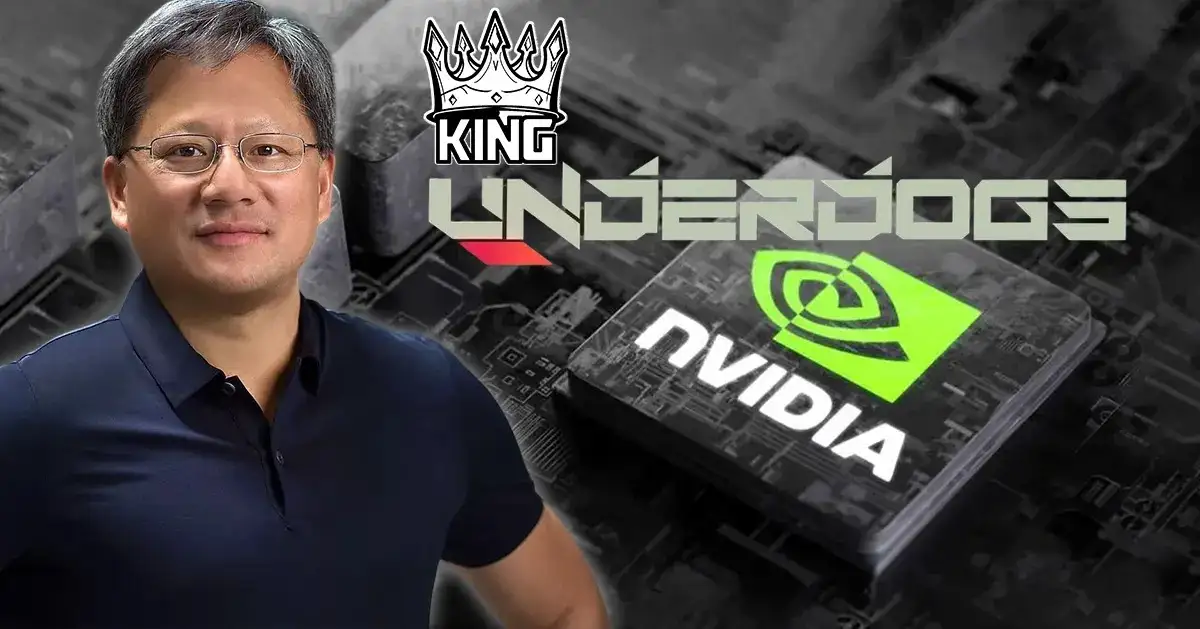Nvidia Can Turn Market Underdogs To Kings Overnight
Previously, Nvidia was considered the world’s dominant chipmaker. But now, in less than two years, Nvidia has become the world’s most powerful AI infrastructure provider.
Its influence now stretches beyond Silicon Valley, shaping global markets, national strategies, and the future of intelligence itself. The company’s ability to elevate unknown players into market leaders, almost instantly, is no longer a theory. It’s happening.
$130 Billion Revenue. $3.3 Trillion Valuation
Monopoly in Motion
Nvidia’s data center business alone generated $30.8 billion in Q3 FY2025, representing 112% year-over-year growth. Nearly 88% of Nvidia’s total revenue now comes from AI infrastructure. Let’s have a closer look at Nvidia’s fiscal year ending January 2025, which shattered records:
- Revenue: $130.5 billion, up 114% from FY2024
- Net Income: $72.88 billion, up 145%
- Gross Profit Margin: 74.99%
- Operating Margin: 62.42%
- Market Cap: Briefly hit $3.3 trillion, surpassing Apple and Microsoft
Jensen Huang: “AI Is Advancing at Light Speed”
Nvidia’s CEO isn’t shy about the company’s ambitions. His statements are bold and reflect Nvidia’s grip on the future of AI, robotics, and autonomous systems. He said:
“AI is advancing at light speed as agentic AI and physical AI set the stage for the next wave of AI to revolutionize the largest industries.”
“We’ve successfully ramped up the massive-scale production of Blackwell AI supercomputers, achieving billions of dollars in sales in its first quarter.”
“Demand for Blackwell is amazing as reasoning AI adds another scaling law, increasing compute for training makes models smarter, and increasing compute for long thinking makes the answer smarter.”
One Partnership Can Flip a Market
Nvidia’s Inception Program now supports over 15,000 startups, offering cloud credits, SDKs, and training.
When Nvidia backs a company, that company gains instant credibility, investor attention, and a technical advantage.
Startups like CoreWeave, Recursion, and Mistral AI saw valuations soar after integrating Nvidia’s stack. Even mid-tier cloud providers gained enterprise traction simply by offering Nvidia-powered infrastructure.
Analysts Are Impressed Yet And Uneasy
Wall Street remains bullish, with price targets ranging from $175 to $250 per share, implying a future valuation of up to $6 trillion. But some experts are sounding alarms:
Jon Peddie, GPU market analyst, said, “Great, even closer to a monopoly… AMD’s reaction will be something like 97% Nvidia’s total one-sided domination.”
Similarly, according to GuruFocus via Yahoo Finance, “Nvidia would need its market cap to climb to $4 trillion for its shares to trade at $200… Time will only tell if $200 is a milestone or a mirage.”
The Risks Beneath the Surface
While major headlines are celebrating Nvidia’s growth, deeper concerns are emerging:
- Geopolitical Exposure: Nvidia’s sovereign AI deals with Saudi Arabia, UAE, UK, and India are strategic, but vulnerable to political shifts.
- Environmental Impact: Training large AI models consumes massive energy. Even with Blackwell’s efficiency gains, the scale raises sustainability questions.
- Ethical Blind Spots: Nvidia’s chips power autonomous weapons and surveillance systems. Only a few ask who’s accountable or how its infrastructure shapes these outcomes.
Power With Consequences
Nvidia’s ability to turn underdogs into kings is real. But so is the risk of overreach. Its dominance is reshaping governments, international markets, and the future of AI itself. Now the real challenge is far worse. It is necessary to ensure that this power is balanced by ethical oversight and regulation.
Most importantly, no single power should command the whole world; it should be challenged by competition to bring ultimate fairness and transparency. Because when one company becomes the backbone of global intelligence, the stakes are no longer just financial. They’re societal.




